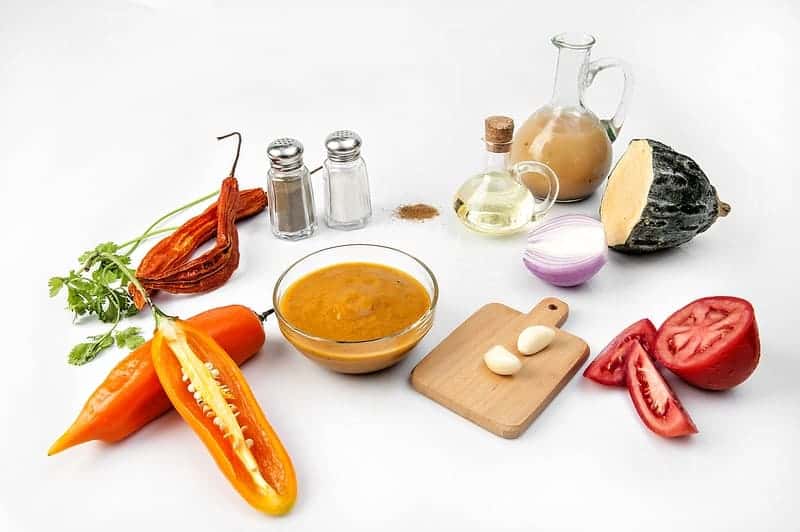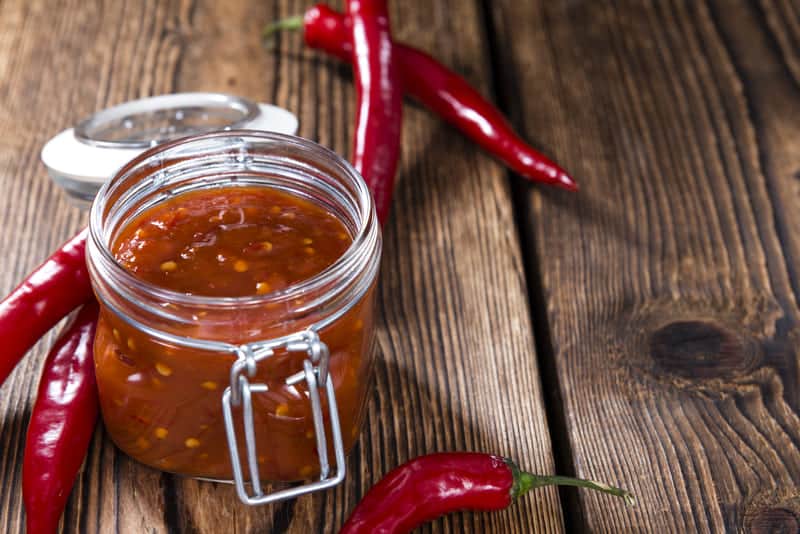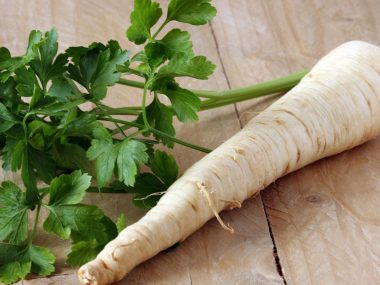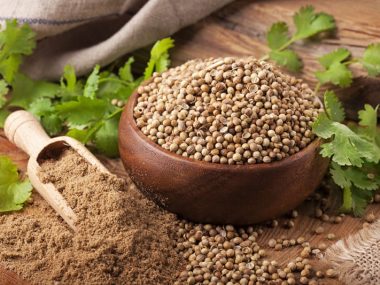Chili pastes add a HUGE amount of flavor to many dishes and are essential ingredients in many cuisines around the world.
If you’re a fan of Peruvian cuisine, you’ve most likely come across the aji Amarillo paste. It’s an important ingredient in Peruvian cuisine used in countless recipes and will add incredible flavor to your dishes.
You can buy Aji Amarillo Paste in restaurants or stores, as fresh or frozen, but what happens if you can’t nab yourself a bottle of this prized paste? Look no further as we have listed excellent substitutes for aji Amarillo paste using aji or other peppers coupled with spices and seasonings to mimic the amazing flavor of this ubiquitous chili pepper paste.
What is Aji Amarillo Paste?
Before getting into the substitutes, first, let’s talk about this chili paste some more.
Aji Amarillo paste is a bright orange, thick sauce essentially made from ground-up fresh aji Amarillo chili peppers.
It has an incredible flavor, aromatic and moderately spicy that is pleasant even to people unaccustomed to spice.
The paste can be made from fresh aji, pureed, and then pasteurized while some are made from dried aji peppers.
Drying the peppers protects them and makes them sturdy while also concentrating their flavor. This results in a flavor bomb that will make your spicy paste brighter with a hint of fruity sweetness.
Aji Amarillo, or simply aji, was believed to have first been cultivated in 2500 BC in the region of the Peruvian Andes, where the Incas lived for thousands of years. These South American chili peppers are native to Bolivia, Peru, and Ecuador.
Peru, in particular, is home to many different aji varieties, but the aji Amarillo is the most popular. It has been expanding into other areas as a result of its rising interest outside of the nation.
As the name suggests aji Amarillo stands for yellow chili peppers -, aji is Spanish for chili while Amarillo is yellow.
The yellow pepper that we may be familiar with is the domesticated version of the wild fiery pepper that grew naturally in this part of the world. These perfect yellow peppers turn a vibrant yellow-orange when ripe.
They grow to about 4-5 inches in length with skins ranging from smooth to rippled. The color varies from yellow to a deep orange as the peppers turn fully mature.
A medium-spicy pepper, the Aji Amarillo has loads of fruity flavor, particularly that of raisin, banana, lemon, and berry.
Although almost twenty times hotter than a jalapeno pepper, the sting is mitigated by its fruity undertones. It has a Scoville Heat unit rating between 30,000 – 50,000 SHU comparable to Cayenne and Tabasco hot peppers.
These probiotic peppers contain potassium, antioxidants, and flavonoids that promote good health. They are also an excellent source of vitamin C.
What Does Aji Amarillo Paste Taste Like and how to use it?
The flavor of fresh aji Amarillo paste is uniquely vibrant making it one of the foundational peppers of Peruvian cuisine. It is considered one of the holy trinity of the cuisine, along with garlic and red onions.
The chili paste is thick in consistency and usually includes more chili peppers as the primary ingredient causing the sole flavor of the peppers to shine. In Peru, it’s commonly used as a flavoring or a condiment to be served at every meal.
It’s used in a number of their dishes especially in their two national dishes, Lomo Saltado and Ceviche as well as in a variety of other dishes:
- Aji de Camarones
- Aji de Gallina,
- Anticucho de Pollo
- Arroz Chaufa or Peruvian Fried Rice
- Arroz con Pollo
- Papa a la Huancaina,
- Peruvian Potato Chicken Salad
- Pollo ala Brasa
- Salsa Huancaina
There are many ways to use aji Amarillo paste, as a marinade to flavoring. It kicks up dishes with medium heat and provides an amazingly bright, citrusy flavor.
Prized for its unique flavor, the paste can be used not just in Peruvian cuisine but in many dishes ranging from:
- Meats, vegetables, seafood, as a marinade or to flavor stews,
- To add a zesty zing to pasta and rice dishes,
- To add a punch to salad dressings.
- Reconstitute dried aji Amarillo and toss with chopped red onions, lime, and salt as a salsa
The excellent Aji Amarillo sauce uses aji Amarillo paste to give it a distinct taste – citrus with a spicy finish. Aji Amarillo paste is mixed with other ingredients, including lime, herbs, seasonings, crema, tomato paste, and more to make the sauce.
Also check: 10 Best Harissa Paste Substitutes
Where to buy Aji Amarillo paste?
In some South American countries, you’ll find them easily at markets in many forms, including fresh and dried, canned, or chili paste.
In other parts of the globe, Aji Amarillo paste may be sold in Latin American food stores near you. Amazon, eBay, or online specialty food shops also carry a handful of aji Amarillo paste brands.
However, if aji Amarillo paste is unavailable in your city, you can always make it from scratch. Outside of Peru, fresh aji Amarillo peppers are extremely difficult to find and expensive to boot.
Search for powder, dried, or frozen aji Amarillo peppers instead, and consider growing your peppers if you’re a big fan. They grow in favorable climates and yield a bountiful harvest.
Here’s how to make an awesome Aji Amarillo paste at home:
In Peru, aji Amarillo paste is often made from scratch when needed. Peruvian households, with abundant fresh aji, simply grind the chilis into paste every day.
Elsewhere in the world, the paste is usually sold canned and found in most Latin American markets or online specialty food shops.
While most Peruvian households make a fresh batch of aji Amarillo paste daily, it doesn’t seem all that practical.
We suggest making a big batch of this versatile paste instead, pouring them into ice cube containers, and store up to 3 months in the freezer. Skipping freshness for convenience allows you to have this wonderful paste in your freezer whenever you need it.
What are the ingredients needed for our aji Amarillo paste?
We simply need two: a kilo of fresh aji peppers and 2 tablespoons of neutral-tasting oil for a lovely viscosity.
How to make Aji Amarillo Paste?
An authentic aji Amarillo paste doesn’t contain anything apart from chili peppers and a little liquid. There is no need to add onions, garlic, herbs, or salt.
This will be added to your cooking so you can season your dish instead. If you are planning on enjoying this paste as a dipping, you can turn the paste into a sauce by cooking it with seasonings and herbs.
- Wear gloves (very important!). Slice fresh aji peppers in half. Remove all the seeds and veins.
- Blanch the aji so you can easily peel them. Blanching them will also give the paste a smoother texture and make it less acidic.
- Drain and cool the peppers.
- Peel them (don’t forget your gloves!).
- Place in a blender with your oil and pulse to a smooth consistency. Add a little bit more water, just the minimum needed for your blender to combine everything nicely.
Now you are ready to make most Peruvian recipes that call for this brightly colored and aromatic ingredient. Try using it in your cooking by starting with a small amount and adding more if needed.
If you can’t find fresh peppers or think they’re a tad too expensive, worry not! There are many replacements for aji Amarillo paste. Read on for our recommended alternatives.
10 Substitutes for Aji Amarillo Paste
If you’re unable to make this paste from fresh aji peppers, try looking for aji peppers in any form and make your paste at home. The most common forms of aji Amarillo peppers are in powder or frozen form.
Choose peppers that have a similar flavor profile to aji Amarillo – medium spicy, somewhat sweet with a fruity berry undertone.
You can most certainly tame the heat of these peppers by simply coring them out to remove the seeds, which is where most of the heat resides.
Alternatively, you can use sweet bell peppers – yellow, orange, or red, for added flavor but with no heat.
Additionally, you can substitute the pricey aji for more commonly found and affordable peppers.
Here are some of the ways you can substitute aji Amarillo paste or other chili paste options that can give you similar results in flavor and aroma.
1. Aji Amarillo Powder
When looking for a substitute for aji Amarillo paste, the best would be to look for the actual pepper itself. Aji Amarillo powder is made from dried and ground aji Amarillo peppers.
This versatile spice powder pairs well with a lot of foods and will have the same moderately spicy heat level with a fruity undertone. To use aji powder in your cooking, use about a third of a cup less than aji Amarillo paste (1:3).
In some cases, turning your powder into a paste is not required unless the recipe has no other liquid save for the paste.
As a first step, sauté onions, garlic, and aji Amarillo powder in oil until it browns and turns thick. This will concentrate the flavors into a paste.
Feel free to add oil and a little bit of liquid like broth when browning. This paste then goes into a dish directly or stored in an airtight container in the fridge for a few days or freezer for several months.
When cooking your dish, taste and check the heat level after several minutes. Add more if needed and repeat if necessary.
2. DIY Aji Amarillo Paste using Frozen Aji Amarillo Peppers
If you’ve managed to cop yourself with a frozen bag of aji Amarillo peppers, make a paste with it! They’re more widely available than any aji powder or dried form.
This is another great option to swap for aji Amarillo paste. The peppers are frozen right after picking to preserve their freshness and keep that entire sweet, fruit flavor in the small hot peppers.
The frozen peppers do lose some of their quality when being defrosted but because they are cooked the difference between fresh and frozen peppers is negligible.
Just make sure the peppers still look vibrant and aren’t freezer-burned. To make the paste, peel the skins off, boil them then throw them in the food processor.
Once smooth, cook them in a skillet with a little oil then let them cool in a clean container. This homemade paste makes great additions to salads, sauces, salsas, and stews.
Use the DIY paste as a direct substitute (1:1 ratio) for aji Amarillo paste.
3. Homemade Aji Mirasol Paste
While the dream is to get your hands on some fresh Aji Amarillo peppers, they’re so hard to find outside of Peru. Dried aji Amarillo peppers are the next best things.
Dried aji Amarillo peppers are also known as aji mirasol so aji mirasol paste is simply ground up dried aji Amarillo peppers in a little bit of oil.
Remove the seeds and stems. Rehydrate the dried aji Amarillo with a little hot water then let it rest for at least 30 minutes.
Add the chili peppers to a blender with a touch of water, then neutral-tasting oil, and blend to a paste.
Turning dried aji Amarillo peppers produces a more intense, earthy flavor that is excellent in hearty soups and stews.
4. Salsa de Rocoto
If you cook a lot of Peruvian food and stock many Peruvian pantry ingredients then you probably just ran out of aji Amarillo paste whilst cooking your dish.
If I’m right, grab a bottle of salsa de rocoto from the cupboard and add it to your recipe in a 1:2 substitute for aji Amarillo.
Salsa de Rocoto made from the incredibly hot South American rocoto peppers is closer to a sauce consistency. It’s used as a dip and on virtually any Peruvian dish, from chicken to rice.
This sauce is hotter than aji Amarillo paste and you will need to reduce your dish to offset the water. It has a crisp fruit flavor perfect for the brightness of salsa.
Add a squeeze of lime and some cilantro to your dish to approximate the taste. If it’s too hot add a sprinkle of sugar.
5. Habanero Chili Pepper + Yellow Bell Pepper
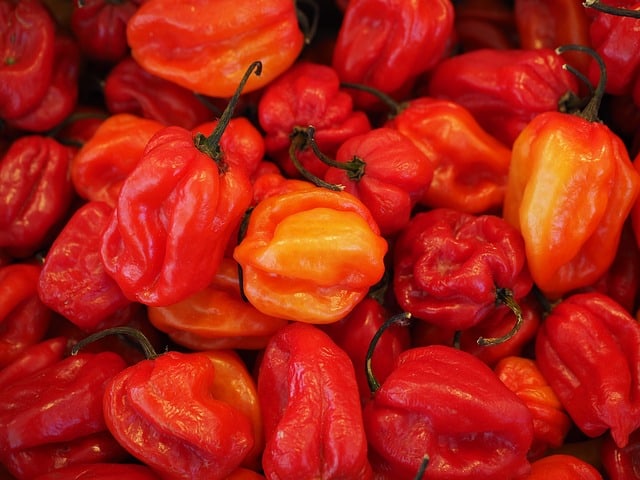
To make a paste from the pepper, simply core and deseed blitz up fresh or dried habaneros with sweet yellow bell peppers and thin it out with a little oil.
Some habanero chili paste recipes also contain cilantro and lime; two prominent tastes linked to aji Amarillo pepper paste.
This paste works well in a wide variety of foods. With a Scoville rating of between 100,000 – 350,000, many people will find habanero peppers’ heat to be too strong.
When using this substitute, the heat level of your recipe may also change depending on which peppers you use. Use sparingly or follow a 1:3 ratio as a substitute for aji Amarillo paste.
6. Ancho Peppers + Cayenne Pepper Powder + Lime Powder
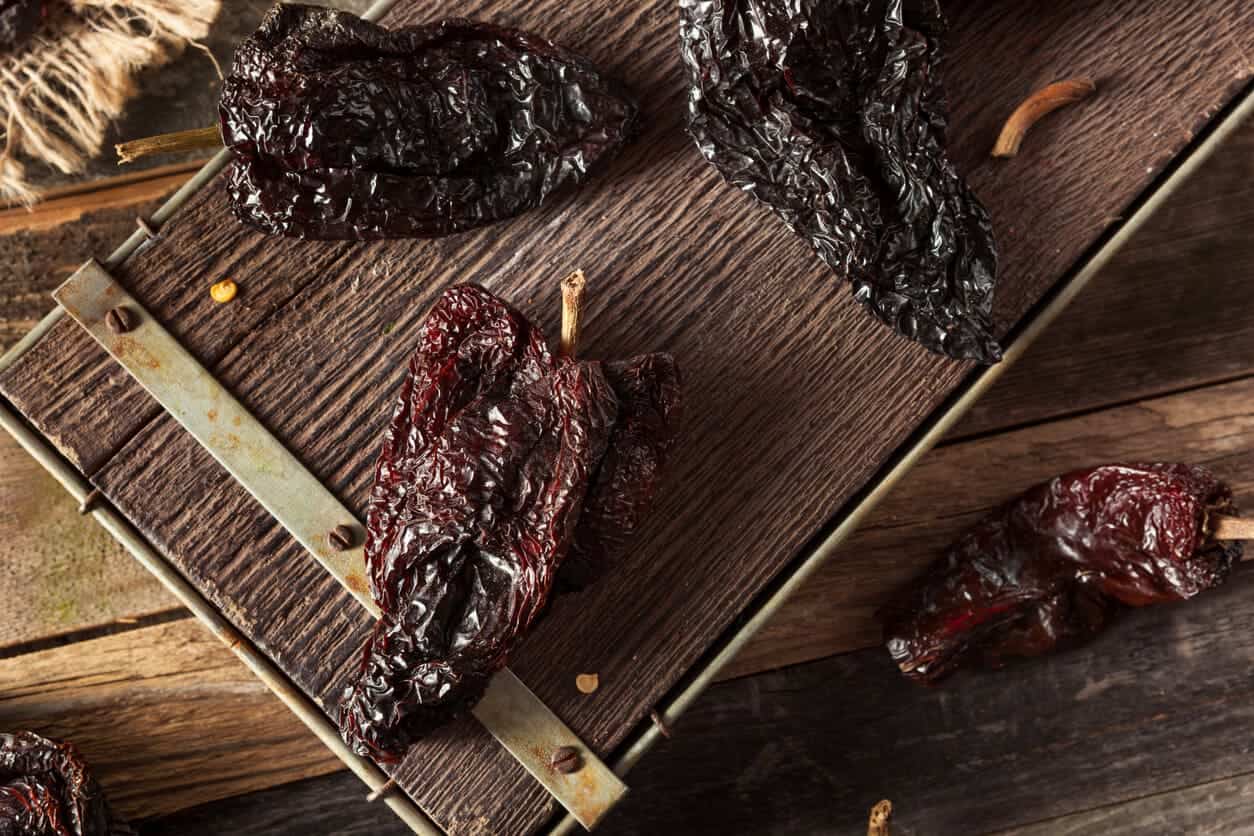
Popular in Mexican cuisine, it has a rich, raisin-like sweetness, similar to that of aji Amarillo peppers. This pepper has a high yield of flesh-to-skin ratio making it meaty for sauces.
When turned into paste, ancho paste is well suited as marinades, or to flavor soups and stews. Rehydrate dried ancho peppers and grind them into a chili paste with a little oil.
Add a dash of cayenne chili pepper powder to increase the heat and lime powder to add the tang of the paste bringing it closer to aji Amarillo.
Cayenne pepper powder and lime powder are available in grocery stores and can be used in many dishes. You can stock these powders in your pantry if you don’t already have them.
Additionally, ancho paste is quite easy to find in groceries or online food shops. Adding both heat and warmth to a dish, use this homemade or store-bought paste in a 1:1 substitute for aji Amarillo paste.
7. Guajillo Peppers + Cayenne Pepper Powder
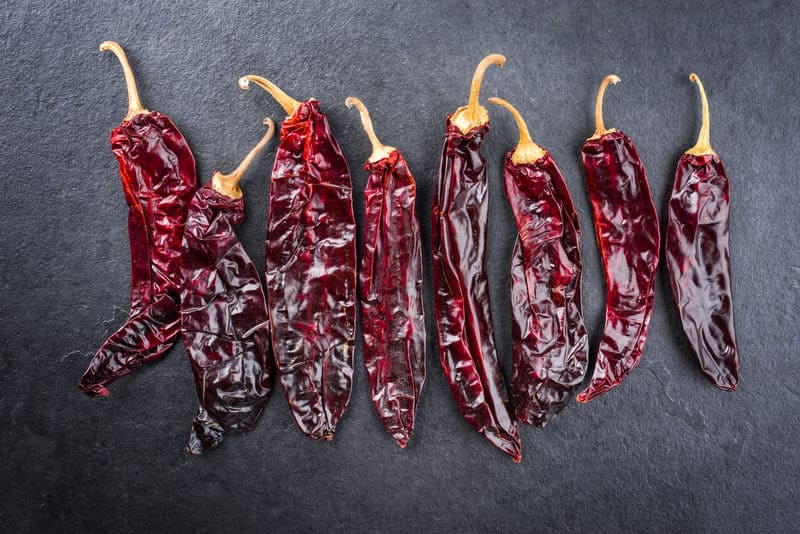
It shares a near-equal spiciness to jalapenos landing at a 2,500 – 5,000 SHU. They are fruit, tangy, smokey, and mildly acidic sharing some of their flavors with traditional aji Amarillo paste, but naturally, with a slight difference in flavor.
These peppers are quite common in Latin groceries or online. Turn these peppers into a paste. Add spiciness by sprinkling in some chili powder or cayenne pepper powder and use in a 1:1 ratio.
8. Serrano Peppers + Lime + Onion Powder
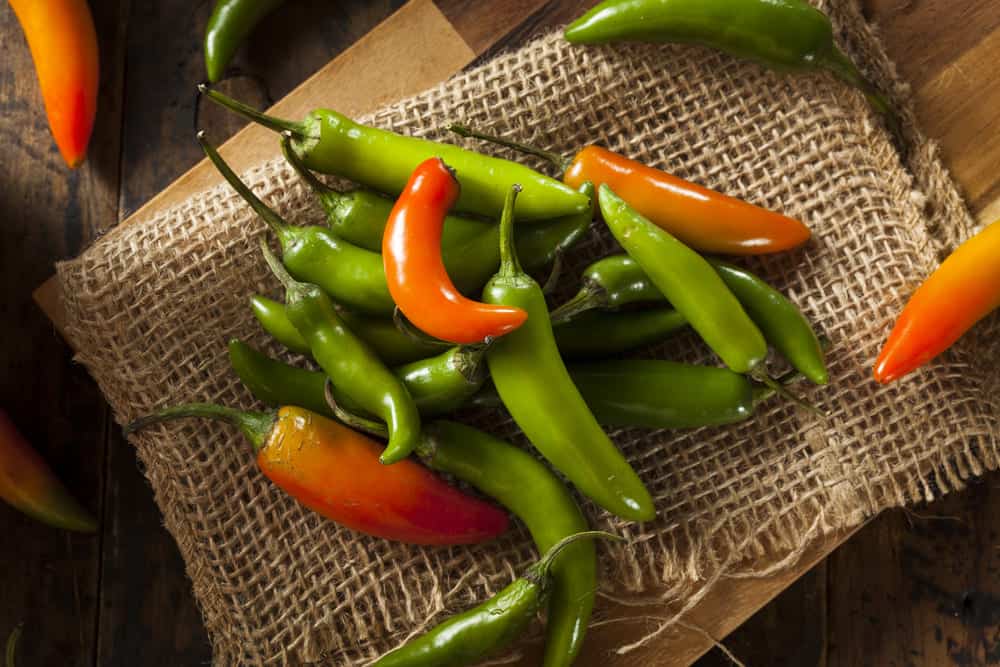
These peppers come in varying hues of yellow, green, red, orange, and brown which shows their heat level – red being the spiciest. It has a crisp, earthy taste that makes it a close substitute for aji Amarillo.
With this substitute, we’ll replicate the bright citrus flavors with medium heat of these Peruvian peppers with an aji pepper in a different form flavored with herbs, seasonings, and other spices.
Serrano peppers are also widely available in stores making them a practical substitute. To replace aji Amarillo paste, turn dried serrano peppers into a paste, mix with a squeeze of lime and some onion powder and use in a 1:1 ratio.
9. La Jiao Jiang
La Jiao Jiang is a Chinese chili paste made from a mix of hot peppers, vinegar, and salt.
This chili paste usually comes in with extra heat so tone it down in your dish by adding it in a 1:2 substitute for aji Amarillo paste and then adding in some sugar to further balance out the dish.
Add lime powder, onion powder, and cilantro to introduce other flavors that will be missing from this plain but extremely hot Chinese red chili pepper paste.
10. Sambal Oelek
If you like cooking Asian cuisine, you probably have some form of chili sauce in your cupboard. Sambal Oelek is a popular Indonesian chili paste.
It is typically made with hot red chili peppers, salt, and vinegar but only mildly spicy compared to aji Amarillo paste. Some recipes also contain onion, lemon, and garlic.
The condiment has a thick paste-like consistency perfect for marinades, salad dressings, salsa, and as a dipping sauce. A slight Asian twist will be added to your dish if choosing this substitute.
But if this is something that’s already in your cupboard, feel free to use it. When using this as a substitute for aji Amarillo, use it in a 1:1 ratio.
11. Sriracha
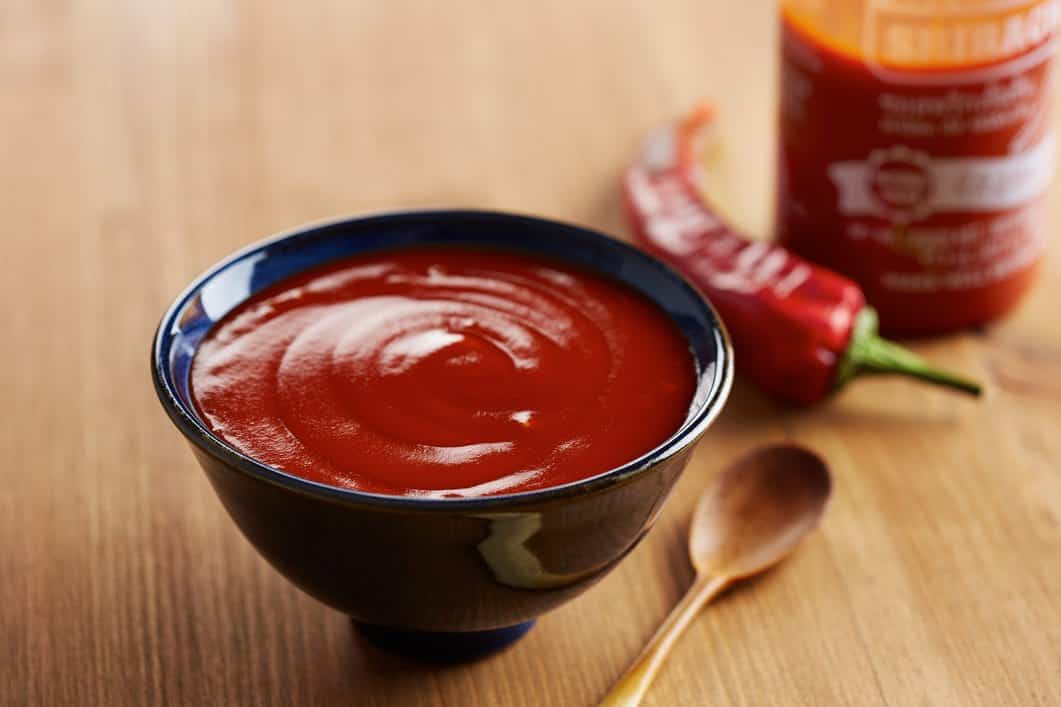
Sriracha is made from sun-ripened red jalapeno peppers that are then ground and mixed with garlic and salt. Albeit runny, this moderately spicy hot sauce has a spicy, tangy, sweet with pungent garlic notes.
If you have this condiment at home, you can certainly use it as a stand-in for aji Amarillo paste in recipes like soups and stews and as a dipping sauce in a 1:1 ratio.
What pepper is closest to Aji Amarillo?
While there is no specific chili pepper variant that can replace the aji Amarillo pepper, there are some peppers that are close to its bright, fruity, spicy taste.
Serrano pepper is less spicy than aji Amarillo while Scotch Bonnets and Habanero peppers are up to five times spicier than aji Amarillo.
These three are often used as substitutes for aji Amarillo peppers in cooking. On the Scoville scale, in terms of heat level, the Cayenne Pepper and Tabasco Peppers are the most similar to aji Amarillo.
